My practice at Significa involves copywriting in various forms, often about design, product development and best e-commerce practices. Sometimes, I get to write about topics that hit closer to home. I’ve gathered these pieces here so you can get a sense of my own voice and perspective.
Like any great relationship, the best brand collaborations are built on chemistry, mutual benefit, and a shared vision. And, much like in the dating world, some partnerships are unforgettable love stories, while others fizzle out as awkward mismatches.
In this article, I explore the power of brand partnerships: how they boost engagement, drive sales, and even create cultural moments. From IKEA x LEGO to Heinz x Absolut Vodka, we’ll break down what makes a successful collaboration, why some flops should serve as cautionary tales, and how even competitors can come together for the greater good. In short, we’ll show you that good collaborations equal good business.
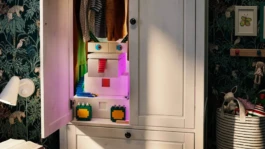

Why brand collaborations work
According to Forbes, in 2023, some brands generated over 28% of their total revenue through partnerships, with those committed to long-term collaboration seeing annual revenue growth exceeding 50%. These figures highlight the increasing importance of brand collaborations, not just as marketing stunts but as integral components of business strategy.
When done right, partnerships create a synergy that benefits both brands meaningfully. By tapping into each other's audiences, brands expand their reach and attract new customers who might not have engaged with them otherwise. A well-matched collaboration strengthens brand identity, reinforcing credibility and shaping consumer trust through association.
But beyond just visibility, exclusive releases and unexpected crossovers can generate real buzz, driving organic conversations, sparking media attention, and keeping both brands top-of-mind. The excitement surrounding co-branded products often leads to higher demand, premium pricing, and, ultimately, a tangible boost in sales. In short, smart collaborations don't just make noise. They drive impact.
A study by ADM Group found that over 70% of consumers react positively to brand collaborations, with many viewing them as innovative and exciting. The right partnership can turn passive audiences into engaged fans, making collaboration a powerful tool for growth and visibility.
Power Couples
When you know, you know. Some brand collaborations click, creating products and campaigns that leave a lasting impression, capturing hearts and market share alike.
When IKEA and LEGO partnered to create the BYGGLEK collection, they reimagined both storage and play. The boxes double as LEGO-compatible surfaces, seamlessly integrating fun into everyday life. The partnership worked because it addressed a genuine need while staying true to both brands' core values: creativity and functionality.

Swiss performance brand On collaborated with Spanish fashion house Loewe to blend technical innovation with high-end aesthetics. The result? A running shoe that isn't just about function but also about status and design. This type of collaboration appeals to a growing audience that values both performance and style, especially in the high-end athleisure market. Adding even more star power to On's brand positioning, Zendaya, an award-winning actress, singer, and fashion icon, has recently partnered with On, further elevating its appeal to a fashion-forward and performance-driven audience.

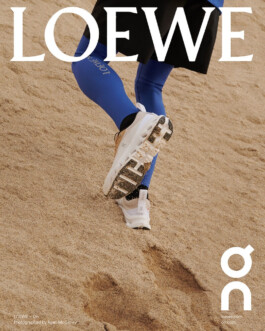
Sometimes, the best partnerships are delightfully unexpected.
Heinz and Absolut started a saucy affair to create a limited-edition tomato vodka pasta sauce, playing on the popularity of pasta alla vodka. This collaboration was a masterclass in leveraging both brands' strengths while embracing an element of playfulness and indulgence, with the bonus of creating an entirely new product.
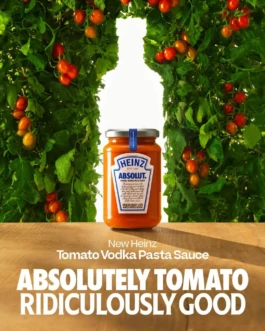
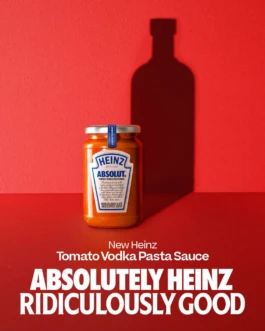
Few rivalries are as fierce as McDonald's and Burger King, yet in 2017, the two fast-food giants set aside their differences for a greater cause. As part of Argentina's "A Day Without Whopper" campaign, Burger King took an unprecedented step, halting sales of its signature Whopper for a day and directing customers to buy a Big Mac instead. The goal? To support McDonald's initiative of donating all Big Mac proceeds to help children with cancer.
The campaign struck a chord, generating 206 million impressions and resulting in 73,437 additional Big Macs sold. The Argentine newspaper Clarin called it "a truce in the eternal war of burgers," proving that even the fiercest competitors can collaborate for meaningful impact.

Broken Hearts
Not every partnership is a success. Sometimes, the chemistry is off, the execution falls flat, or the final product doesn't live up to the hype. Case in point: Nike x Tiffany & Co., a dream collaboration on paper but a bit of a real letdown. Instead of an innovative fusion of sportswear and luxury, consumers got a plain black sneaker with a Tiffany-blue swoosh. The reaction? A collective shrug.
Another high-profile breakup? Yeezy x Adidas. What started as a groundbreaking partnership that reshaped sneaker culture ended in controversy and legal disputes. Adidas terminated its collaboration with Kanye West (Ye) following a series of public controversies, leaving the brand with unsold stock worth billions and forcing it to rethink its approach to celebrity partnerships. What was once an industry-defining collaboration became a cautionary tale on the risks of aligning too closely with individuals who could damage brand reputation.
Authenticity is the foundation of any successful collaboration because a recognisable name alone isn't enough. When two brands don't share complementary values or aesthetics, the result can feel forced and uninspired.
A great partnership should go beyond the expected, creating something that meets and exceeds consumer expectations. With creativity and storytelling at its core, it should surprise and excite rather than leave audiences indifferent. If it feels lazy or uninspired, people will notice, and they won't hesitate to call it out.
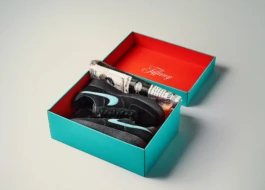
Art, meet Brand <3
Art has always been a powerful medium for brands to elevate their image and connect with audiences in new ways. Long before artist collaborations became mainstream, Château Mouton Rothschild, a renowned wine label, set a precedent in 1945 by commissioning renowned artists like Miró, Picasso, and Jeff Koons to design its labels, turning each vintage into a collectable masterpiece.
Today, collaborations between brands and artists go beyond aesthetics; they create exclusivity, cultural significance, and heightened desirability. Louis Vuitton x Yayoi Kusama is a prime example, where the Japanese artist's signature polka dots transformed luxury fashion into wearable art, making the collection both commercially and critically successful. Similarly, Swatch's long-running partnerships with contemporary artists turn everyday watches into artistic statements, blurring the line between product and collectable.

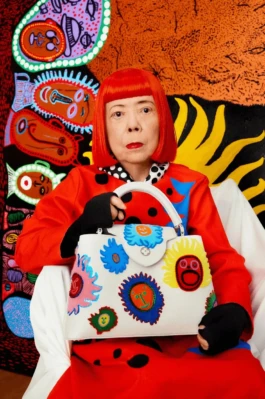
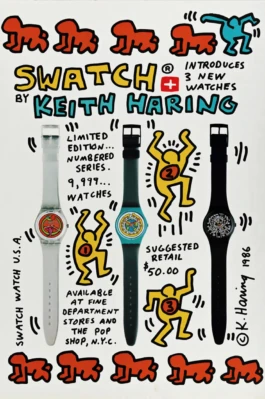
Spreading the Love
Beyond one-off collaborations, some brands have taken partnerships a step further by morphing into marketplaces — i.e., platforms that elevate smaller businesses. Sephora has built a reputation for championing indie beauty brands like The Ordinary and Kiehl’s alongside global giants, giving consumers more choice and diversity in their shopping experience.
A similar model can be seen in Galeries Lafayette, the Paris-based retail giant known for its dynamic collaborations with emerging designers and niche brands. These partnerships often feature large-scale installations that turn the shopping experience into a curated cultural event. A prime example is its work with Jacquemus, where the brand took over its storefronts with immersive pop-ups that blurred the line between retail and art. By integrating independent labels into its ecosystem, Galeries Lafayette masterfully balances heritage with innovation, making it a must-visit destination for fashion-conscious shoppers.
This model is a win-win for both sides. Smaller brands gain visibility, credibility, and access to a broader audience without the heavy lifting of setting up their distribution networks. At the same time, larger platforms keep their offerings fresh, dynamic, and aligned with evolving consumer trends without developing everything in-house.
In this case, love isn't just about teaming up, but creating an ecosystem where everyone wins. The right collaborations don't just boost sales; they drive sustainable growth, spark fresh opportunities, and keep brands relevant in an ever-changing market.
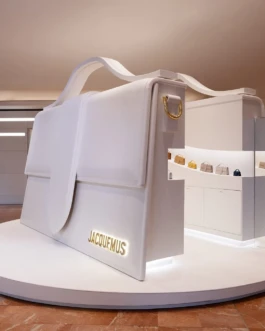
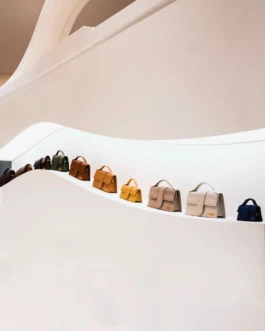
Good Collaborations = Good Business!
Just like personal relationships, brand partnerships thrive on shared values, authenticity, and a touch of excitement. Whether two industry giants team up for a limited-edition product, competitors join forces for a cause, or marketplaces provide a platform for smaller players, the power of collaboration is undeniable.
But here's the thing — flirting with other brands is fun, but if you want the relationship to last, you need to be ready to step up. A successful partnership isn't just about great chemistry; it's about preparation. If you're an e-commerce brand, for example, a well executed collab might drive a surge of traffic—can your platform handle it? Are your logistics in place? Scaling through collaboration is exciting, but only if you're set up to make the most of it.
Imagine a day at the office without women. Not just without their presence but without their impact. You wouldn't be reading this because the internet wouldn't exist without Hedy Lamarr. Need Wi-Fi? Too bad. Trying to open a program? That's off the table, too — Ada Lovelace and Grace Hopper laid the foundation for computing as we know it. Voice recognition? No Siri, no Alexa, no ChatGPT, no Huddles — none of it without Dr. Janet Emerson Bashen and Dr. Marian Croak. Even a simple Google search wouldn't be possible without search algorithms pioneered by Karen Spärck Jones. And forget about typing up an email — word processing itself was invented by Evelyn Berezin in 1968.

Karen Ida Boalth Spärck Jones was a self-taught programmer, responsible for the concept of inverse document frequency (IDF), a technology that underlies most modern search engines. Her slogan was "Computing is too important to be left to men."
While these pioneers laid the groundwork for today's technology, their legacy continues through contemporary women leaders who are transforming different facets of the digital landscape. These innovators are building on their foundations and redefining what's possible.
Revolutionising products and consumer experiences
In the realm of product innovation, women are solving problems that industries claimed were unsolvable. Katherine Homuth upended the hosiery industry when her brand, Sheertex, developed ultra-durable tights using bulletproof material, proving even legacy industries can be disrupted through material science and direct-to-consumer approaches. Similarly, Tania Boler created an entire market category when she launched Elvie, developing smart health devices that changed the conversation around women's health while building an e-commerce empire. On the platforms that power these experiences, Vanessa Lee, Shopify's VP of Product, has been instrumental in shaping user experiences that empower brands of all sizes to scale seamlessly, enhancing checkout flows and driving personalisation, continuing to be a market leader and pioneer in e-commerce solutions.
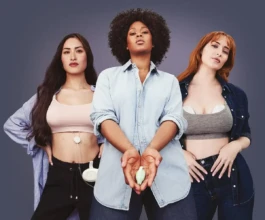
Elvie offers a range of products to give women the tools to enable what their bodies have always been capable of, across every phase of womanhood.
Creating platforms that put people first
The relationship between technology and human connection is being redefined by innovators like Ana Kirova, who transformed Feeld from a niche dating concept into a global brand by centring UX, privacy, and ethical tech in an industry dominated by algorithm-driven swiping. Her approach complements the revolution started by Whitney Wolfe Herd, founder of Bumble, whose women-message-first model challenged fundamental assumptions about online dating interfaces and user behaviour. In a different domain but with similar human-centred principles, Chani Nicholas and Sonya Passi have turned astrology into a hyper-personalised digital business with CHANI, building a loyal community through subscriptions, content, and an app-first approach — proof that personalisation creates genuine value that users will pay for.
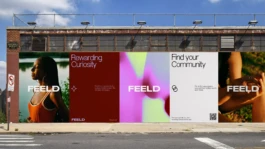
FEELD invested in a complete rebrand made by Made Thought in late 2023.
Education, design, and social impact
Education and design represent perhaps the most foundational areas for long-term change. Jagriti Agrawal is making computer science and AI education accessible to everyone through Kira Learning, using technology to bridge crucial skills gaps for future generations. In the sustainability space, Tessa Clarke co-founded Olio, a food-sharing app that tackles food waste by connecting neighbours to share rather than discard surplus food. Her innovation demonstrates how technology can address environmental challenges while building community connections, proving that digital solutions can create both social and ecological impact. In the design world, Inês Ayer, a Senior Designer now at Instrument (previously at Pentagram), brings a unique perspective to the field. Her vision of design as a catalyst for societal change echoes in her creation of Aliquoti, addressing neonatal mortality among BIPOC women. This commitment to using design for meaningful change is shared by Jessica Walsh, whose work consistently challenges visual communication norms while advocating for women in design through initiatives like Ladies, Wine & Design.
These women are reshaping technology and design across various domains, yet their work also reveals a critical insight: that true innovation requires questioning established frameworks. The very products they've created often challenge conventional thinking about who technology serves and how it should function. This brings us to a fundamental consideration about inclusive innovation: examining the frameworks that shape not just our technology but our understanding of gender itself.
Rethinking gender
In the book Gender Trouble (1990), Judith Butler challenged outdated structures, embracing a broader, more inclusive perspective on gender. As a feminist philosopher and gender studies scholar, Butler argues that gender is not just biological but is shaped by culture, norms, and societal expectations.
This understanding is particularly relevant in technology and design, where products and interfaces often inadvertently reinforce binary thinking. Moreover, when discussing gender equality in tech, we must acknowledge that women's experiences aren't uniform. Intersectionality — a term coined by legal scholar Kimberlé Crenshaw — recognises that aspects of identity like race, disability, sexuality, and socioeconomic background create overlapping systems of discrimination or advantage. Creating truly inclusive digital spaces means designing for this diversity of experience, ensuring the technology we build works for everyone, not just those whose experiences mirror our own.
Questioning these assumptions is fundamental in the fight for women's rights and everyone's right to exist freely, beyond limits or labels. Equality, after all, is what feminism is fundamentally about.
Designing a period tracker
This intersectional understanding directly informed our approach at Significa when we designed and built Dia, an app for TFP (The Fertility Partnership). Recognising that not all women menstruate and not everyone who menstruates identifies as a woman, we considered diverse experiences throughout the development process. It wasn't just about creating a period tracker; it was about designing a tool that centres users' real needs, acknowledges the complexities of reproductive health, and provides an experience that's intuitive, supportive, and free from stigma.
It is meant to be used daily; the more data collected, the more accurate Dia’s insights are. As a result, users gain better knowledge about their bodies, cycles, fertility, and calendars, which ultimately empowers them to be more in control. This project exemplifies our approach to creating digital products that serve real human needs with empathy and precision.
Inclusive workplaces
Beyond celebrating women, challenging societal norms, and building user-centric products, there are plenty of actions which can make workplaces more inclusive.
Companies should implement transparent hiring practices that prioritise skills and experience, eliminating bias in recruitment. Establishing mentorship programmes can actively support women's career growth and leadership development while advocating for family-friendly policies, such as flexible schedules, parental leave, and childcare support, to ensure a more inclusive environment.
Regular pay audits help address gender pay gaps and ensure equal pay, while fostering an inclusive workplace culture means calling out bias, promoting diversity at leadership levels, and making gender equality an ongoing conversation.
Moving forward, together
Technology and design fundamentally shape how we interact with the world. Conscious of its power to either reinforce or challenge existing power structures, the digital products we create don't just solve problems; they reflect our values.
We believe building a more equitable world isn't just about the technology we create; it's about who gets the opportunity to create it. Meaningful change happens through the hiring decisions organisations make, the voices they amplify, and the biases they actively challenge.
Projects like Dia demonstrate what's possible when inclusivity guides product development. This approach creates solutions that serve broader audiences with more meaningful impact.
As a certified B Corporation, Significa is particularly mindful of how our practices affect our team members. The B Impact Assessment evaluates "Workers" as a critical component, examining how organisations support employees of all backgrounds and identities.
Moreover, true progress requires working not only for communities but also within communities, asking difficult questions rather than assuming we have all the answers. As we continue on this journey, we're committed to creating digital experiences that contribute to a more equitable digital landscape.
Women's Day may be one day on the calendar, but the pursuit of equality belongs in our work every day, as designers, developers, and humans sharing this digital world.
Blue Monday — dubbed the “saddest day of the year” — offers a great opportunity to explore how our emotions impact our choices, especially when it comes to shopping. From impulsive purchases to carefully planned buys, it's obvious our feelings often play a starring role in our decision-making… turning Blue Monday into a surprisingly profitable day for online retailers.
You may be wondering, "Is the third Monday of January that bad? "Well, for starters, it’s a Monday. Enough said. Add to that the fading glow of the holiday season, those New Year’s resolutions already hanging by a thread, and the collective financial hangover from December's festivities. Oh, and let’s not forget the gloomy weather — nature's saying, “Stay indoors and reflect on your life choices.”
Of course, this is all a mix of pseudoscience and clever marketing. The term ‘Blue Monday’ was coined in 2005 by the travel company Sky Travel to encourage bookings for winter getaways. And, fun fact, it’s also the title of one of the best songs ever by New Order — a track that arguably does a much better job of lifting spirits than any shopping spree.
But how much do emotions really influence our spending? And what can we do to make smarter, more rational decisions? Let’s explore the psychology of shopping, uncovering the factors that drive our purchases and offering tips on navigating the emotional pull of retail therapy.
Emotional spending
Shopping is far from a purely rational activity. In fact, according to Gerald Zaltman, a Harvard Business School professor, 95% of purchasing decisions are subconscious. In other words, emotions, rather than logic, are the primary drivers behind many purchases. So it’s only natural that on days like Blue Monday, feelings of sadness or boredom may nudge us toward retail therapy as a little pick-me-up. A 2023 report linking to data by Wunderkindshows that sales rose by 18% on Blue Monday as shoppers sought a temporary dopamine hit.
Impulse buying, i.e., buying something on a whim, is also triggered by emotional states. Factors like stress, excitement, or even a sense of reward can lead us to add that extra item to our cart. Retailers understand these emotional cues all too well and use tactics such as limited-time offers and scarcity messaging to heighten urgency and amplify impulsive decisions.
Interestingly, emotions like pleasure, fear, and guilt are often at the core of our purchasing decisions. Pleasure drives us to seek good deals or find the perfect gift, while fear kicks in when we feel we might miss out on a limited-time offer. Guilt can arise after impulse purchases or spending beyond our means. Beyond these emotions, social influences — like the desire for status, acceptance, or community — play a significant role. Brands and retailers tap into these motivations to create a sense of urgency, exclusivity, and even envy. For global markets, cultural values and traditions also shape consumer behaviour, making it crucial for businesses to understand regional nuances.
Emotions arise from networks of neurons across the brain, not single regions as once thought. Understanding these complex processes helps advance mental health treatments and deepen our grasp of human emotions.
Brain + Science + Marketing
Neuromarketing, a field that combines neuroscience and marketing, illuminates how deeply our brains influence purchasing decisions. By studying brain responses to stimuli like advertisements, store layouts, or product packaging, neuromarketing reveals how emotions, memory, and attention shape consumer behaviour.
For example, neuroscience research shows that emotional engagement is critical in purchasing decisions. Ads or products that evoke strong feelings, whether joy or nostalgia, are far more likely to drive sales. This is because the brain processes emotional stimuli more intensely, strengthening memory retention and decision-making. Over the past decade, marketers have increasingly applied neuroscience principles to trigger and influence emotions, changing how brands look, feel, and sound to align with consumer desires. Techniques like storytelling in advertising or crafting sensory in-store experiences tap into these emotional triggers.
The Harvard Business Review highlights a compelling insight from neuromarketing: the role of the brain’s "reward system" in shopping. When consumers encounter a good deal or exclusive offer, dopamine — known as the brain’s “reward chemical” — is released. This surge creates a powerful sense of satisfaction, reinforcing the behaviour and encouraging impulsive purchases.
By understanding these principles, businesses can refine their strategies to align with consumers' thoughts and feelings, while consumers can become more mindful of the subtle influences driving their decisions.
Marketing influences our decisions, but neuromarketing and consumer biometrics reveal that our subconscious is more unpredictable and adaptable than we once believed.
The subtle power of colour and design
Much like our brains react emotionally to storytelling, they also respond to colour and design. Colour psychology studies these responses, revealing how shades can subtly shape our behaviour and perception of brands and products alike. Bright shades like red are linked to impulsive buying behaviours, while blue tones encourage more thoughtful decisions.
Retailers complement their use of colour with thoughtful store layouts designed to encourage unplanned purchases. Frequently moving items or placing essentials at the back ensures shoppers are exposed to new products along the way, keeping them engaged and boosting conversions. Camper, the Spanish footwear brand, does this beautifully, without relying solely on its signature scarlet red.
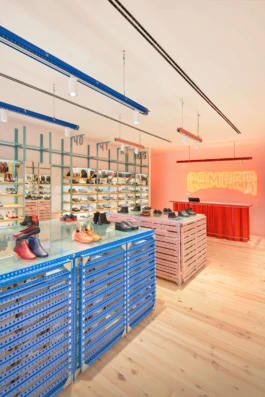
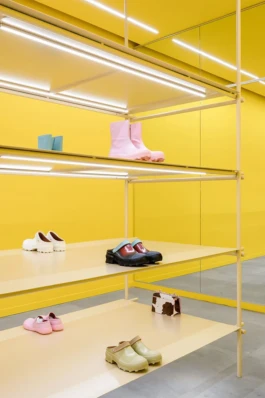
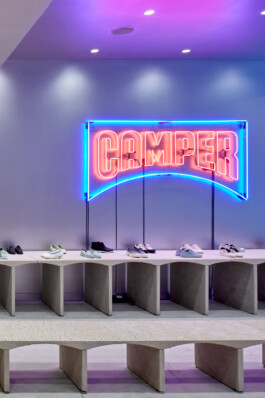


When designing e-commerce platforms, similar tactics are used to guide customers toward additional purchases. Personalised recommendations, strategically displayed “flash sales,” and “frequently bought together” sections mimic the impulse-driving techniques of physical stores. Elements like vibrant call-to-action buttons, attention-grabbing banners, and intentional colour use create a seamless and engaging shopping experience, subtly encouraging unplanned spending while keeping users engaged.
A mindful perspective on shopping
At its core, shopping reveals the intricate connection between human emotions and decision-making. It brings moments of joy and satisfaction but also highlights how much we still have to learn about the workings of our brains. Our susceptibility to stories, colours, and subtle cues underscores the powerful relationship between psychology and behaviour.
For businesses, this understanding is a gateway to creating meaningful, engaging experiences. However, with this power comes the responsibility to act ethically. Harnessing the power of psychology to drive sales must be balanced with transparency and respect for consumer autonomy. Thoughtful design and honest practices don’t just drive sales — they build trust and lasting relationships.
On the other hand, critically examining shopping habits can raise awareness of broader mental health challenges. Whether it’s the dopamine rush of a great deal or the guilt of overspending, recognising these emotional patterns empowers smarter decisions and fosters a healthier relationship with consumption.
Smarter shopping
With all this being said, shopping doesn't have to be an emotional rollercoaster. By understanding the psychological factors at play, taking control of spending and making more mindful decisions is possible! Here are a few practical tips:
— 48-hour rule: taking a step back and waiting two days before making a big item purchase to ensure it aligns with needs and priorities will prevent unnecessary splurges.
— Set boundaries: creating a budget or drafting a list before shopping will keep impulse buys in check.
— Ask why?: inquiring whether a purchase is necessary or posing merely as an attempt to fill an emotional void may be hard but worth it.
— Get sceptical: a top priority should be staying alert to strategies like scarcity messaging or store layout changes designed to nudge toward unplanned purchases.
As we reflect on the psychology of shopping this Blue Monday, let’s remember that understanding our habits goes beyond making better purchasing choices. It’s about harnessing the potential of stories and emotions to create value while prioritising mental well-being. By balancing innovation with integrity, both businesses and consumers can transform shopping into a force for good.
In early 2024, emails were not finding me well at all. I no longer felt like a “turbo-charged whirlwind of ideas” but rather a shadow of myself. Despite my dedication to my job and team, I couldn’t focus. I had trouble sleeping, had recurring nightmares, frequently got sick, and lost interest in almost everything (except for my dog). I often cried, especially in traffic, and intrusive thoughts were my constant companion. I felt rushed but never present, a common symptom of burnout.
The past year had been challenging, and recent events only added to the everyday stress. For about a month, I brushed off my symptoms until I realised I couldn’t continue doing so. I decided to talk to my team leader and find solutions. Now, I'm sharing a brief explanation of what it is, some of its causes, symptoms, and similar phenomena, along with some useful links.
If all of this is hitting a bit too close to home, take this 11-question quiz from The New York Times to assess your emotional well-being right away, or listen to Yale Professor Dr. Laurie Santos and learn "how to be happier in 5 steps with zero weird tricks."
Burnout, qu'est-ce?
Burnout goes beyond mere exhaustion or fatigue from intense activity, which can usually be alleviated with rest or relaxation.
The term "burnout" was coined in the 1970s by psychologist Herbert Freudenberger to describe the impact of stress and high dedication in professions like healthcare and social work. In 2019, the World Health Organization defined it as a syndrome with symptoms such as:
— Energy depletion or exhaustion
— Increased mental distance or negativity towards one's job
— Reduced professional efficacy
Burnout is often job-related, but chronic stress can stem from financial issues, relationship problems, and caregiving burdens. It is exacerbated by the endless stream of perfect lives on social media, along with climate disasters, humanitarian crises, and economic instability.
In fact, burnout isn't a personal failure but a physical reaction to pressure, much like breaking a leg. Would you fix that with a Band-Aid? No. Well, when it comes to burnout, face masks, productivity apps or a few days off won't cut it either. Truth be told, it is distressingly easy to apply an achievement mindset to the concept of rest and self-care itself, laying the blame and responsibility on those with burnout, implying they should do more to feel better. Recovering from any mental illness is not a straight line but rather a process that takes time and effort with plenty of ups and downs.
In his 2015 book The Burnout Society, philosopher Byung-Chul Han argues that stress and exhaustion are chronic social and historical phenomena. Trends like Chinese youth pretending to be birds or dressing “gross” to go to work protest against extreme work hours, hyper-productivity, and the illusory freedom of modern civilisation.

Feeling “Blah"
Remember the hopelessness and the information overload we collectively felt during the COVID-19 pandemic? Most of us were experiencing “Worry Burnout", and we didn't even know it. Similarly, oftentimes, those experiencing burnout only take it seriously when physical symptoms arise. Effectively, one of the good things this pandemic brought about was an increase in awareness and discussion around mental illness, which makes it easier to identify the nuances and specificities of our least positive feelings. For instance, I have discovered there are actually four different kinds of burnout and even a term for when you just can’t find your spark...you just feel “blah” or “meh”.

Four types of burnout
Overload Burnout — Social media can make us believe we not only can but must excel at everything. This burnout occurs when you relentlessly push for success, often sacrificing your health and personal life. You are probably working excessively hard and becoming increasingly frantic in your efforts.
Understimulation Burnout — This burnout stems from boredom and feeling underappreciated at work. A lack of learning opportunities and professional growth can make you feel disconnected, cynical, and avoidant of responsibilities.
Neglect Burnout — This occurs when you feel overwhelmed and helpless, believing you're incompetent or unable to manage your responsibilities. Often linked to imposter syndrome, it involves doubting your abilities and accomplishments.
Habitual Burnout — This arises when physical and mental fatigue becomes chronic, leading to persistent sadness, behavioural changes, and even depression and suicidal thoughts.
Languishing
The neglected middle child of mental health, languishing is a state of mental exhaustion that subtly undermines our self-worth, drive, and sense of purpose. Often mistaken for "the new normal" due to feelings of indifference, it is distinct from depression and its persistent sadness but still incapacitating. Those who languish often feel a lack of control over their lives, uncertain about their future aspirations, are immobilized by decisions, and experience errand paralysis. Without intervention, languishing can disrupt daily life and lead to more severe mental health issues and even increase the risk of premature death.
In Languishing, How to Feel Alive Again in a World That Tears Us Down, Corey Keyes, an American Psychologist, narrates experiencing "restless emptiness" and sheds some advice on how to bounce back from it and get into a state of Flourishing.
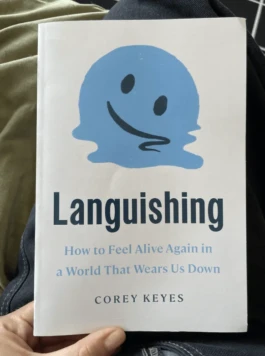
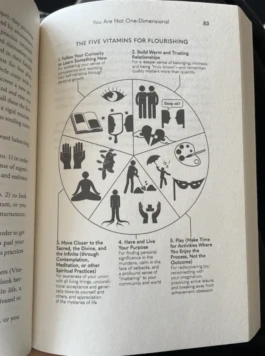
If you would rather listen to a podcast than read a book or this article, I found The Happiness Lab to be a great source of knowledge on this topic. Here are my top three episodes so far:
Flourishing
Three months have passed since my diagnosis, and I feel contrastingly better. All toxic positivity aside, and not to sound cheesy, I can see colours again. The whole team at Significa welcomed me back with warm hugs, and my leads presented me with a structured plan to ease me back into work again. I have clear tasks and goals to achieve at my own pace and rhythm, one day at a time.
I won't bore you with the details of my blooming recovery process, but I will share a few things that are working for me and that you definitely shouldn't wait around to be burned out to put into practice.
Are you thriving? To improve your overall well-being, start by reflecting on how you're doing on vaious aspects of your life. Take the NYTimes quizz!
Drugs do work!
The Verve, the most popular British sad boyband of the 90's sang The Drugs Don’t Work, but I disagree. Of course, they were probably talking about other drugs there, but the point I want to make is that it's about time the stigma around psychological problems and mental-health-oriented medicine vanishes.
I'm pretty sure that if it weren't for my psychiatrist, the adjustment of antidepressants he prescribed and the therapy he advised, the bullet points below might have helped, but wouldn't suffice… You wouldn't go through a tooth removal recovery without some painkillers, would you?
The first few weeks I went on leave, I slept a lot. We often underestimate how vital sleep is. Prioritise sleeping! Having Headspace as a perk from Significa helped me heaps, as I was tired but couldn't stop counting sheep.
As I went back to started therapy, I understood it was important to reassess my priorities and goals. Burnout often signals that something in our lives is out of alignment with our values, so taking time to think about what's truly important to me gave me some perspective and allowed me to see a light at the end of the tunnel.
Since I felt incredibly numb, it was important for me to rely on my community and nourish a sense of belonging. This meant walking dogs with friends, having a beer, or simply running errands together. This helped me feel safe and grounded… as did getting back to the basics.
Corny as it sounds, stopping to smell the roses does help one feel more in tune with oneself and reduce anxiety, even if only momentarily. Think of this as dipping your hands into a huge bucket of raw beans — it is merely a sensory experience that reminds you there is more to you than just what is going on in your head. Or travel somewhere, if you can! Even if the destination is only 30 minutes away. Change the scenario! Or do nothing... like watching Jenny Odell talking about doing nothing and the attention economy — or reading about it.
Get in a state of flow! On "Why you should bring love into the office", I explored what this state of deep concentration entails, and I found I was craving it! Each one of us finds it through different tasks: it may be getting a little project running, cleaning up the closet, taking care of plants…. it must be something that builds your confidence, your energy and your emotional strength while you think of nothing much else. For me, this was all of the above, plus building my personal website according to my realigned priorities and goals.
Last but not least… exercise! Yoga, pilates, and meditation helped me a bit, but I still felt I was running low on vibrant energy. I felt too zen after these practices. It turns out the key for me was intensive cardio — I Hate Jim, but I discovered cycling, re-discovered swimming, and made my peace with walking just for the sake of it.
Food for thought: When was the last time you asked your peers and collaborators what they love the most about their job? When was the last time you were asked, or asked yourself?
Even though the title of this article may have misled you, it is not about introducing you to new ways of celebrating Valentine's Day or normalising something as complex as human emotion. The following words merely reflect on the importance of bringing love into the office, in hopes that this "trend" is here to stay (and hopefully wherever you are reading this from, too).

bell hooks, 1996 © Karjean Levine/Getty Images
All About Love
Let's start by considering the definition of love. I believe no one has done this better than bell hooks in her book All About Love: New Visions, where she defines it as an act of will, both an intention and an action.
“Love as 'the will to extend one's self for the purpose of nurturing one's own or another's spiritual growth. […] To truly love, we must learn to mix various ingredients — care, affection, recognition, respect, commitment, and trust, as well as honest and open communication.”
Love is not just romantic mimicry. It is about nurturing each other and our communities. We all move through multiple social spheres, but one of the biggest communities in our lives is that of our work environment and all that it entails. Our professions are a huge part of our everyday lives, massively intertwined with our identities, and, therefore, an essential component of our well-being.
After the COVID-19 pandemic hit us globally, fuelling already existing movements such as quiet quitting and the great resignation, companies were (are) desperate to find solutions to fight against its consequences, so the ingredients that compose loving (as aforementioned) were finally being paid proper attention to.
As a result, an array of articles and books flooded the internet, with corporations of all scales looking at love as a business strategy. Here are some examples of the latter:
Love is Just Damn Good Business
Dare to Lead: Brave Conversations
Positivity: Top-Notch Research Reveals the 3-to-1 Ratio That Will Change Your Life
Love and Work: How to Find What You Love, Love What You Do, and Do It for the Rest of Your Life
Love and Organisation (Humanistic Management)
These may give you the self-help book cringies (if you are one to have them), but truth be told, dealing with our emotions individually and collectively is not exactly something one learns at school. We all instinctively know it is essential to have discussions about how we feel in our private relationships (again, the romanticisation of feelings floods media everywhere) — but often, there is a disregard for the need for it in professional spheres, too. It is as if we forget that we are complex humans 24/7, not just when we are in the privacy of our homes with friends and family.
Therefore, it is urgent to learn how to communicate openly and honestly, especially when it may feel like the likelihood of offending someone with our words is greater than ever (everything has its ups and downs, including adapting to and nurturing different realities than ours).
CEO vs Chief Love Officer
Chief Love Officer sounds a lot like CEO, right? Well, it's on purpose. The premise is that a CEO is in charge of a business, but a CLO does this by bringing love to its forefront, leading by it (rather than by profit, for example). The first person to coin the term was Mia Kyricos, a globally respected thought leader in the wellness and brand strategy business with 25 years of experience. Here's a masterclass that will get your pandemic Zoom call PTSD blasting — but it's worth it, pinky promise.
I first encountered Mia and the concept of CLO when I read Cristina Amaro's book, Chief Love Officer, launched in 2023. The book has now become a YouTube series in which Cristina speaks to different personalities, and together, they explore love as a business strategy. I was pleased to discover that the strategies these two brilliant women propose are similar to those we already implement at Significa.
Moreover, what they identify as the biggest obstacle to implementing love strategies: communication, has been identified by us as our Achilles heel, as we held our company-wide one-week collaboration workshop, aka Eggceptional Week, earlier this year in January, April, and July.
The Happiness Business
Much like any global trend, this whole love, happiness, mambo jambo can become a trap if the hard work it takes to effectively implement changes is not taken seriously enough. In her talk Championing Diversity, Equity and Inclusion: Strategies for Creating an Inclusive Workplace at this year's edition of Happiness Camp in Porto, Sunaina Kohli urged the crowd, "You listen, but you need to be prepared to act!"
HOW? is the burning question.


Pictured above on the left is Bavaroise’s installation: an explosion of happiness to decorate the halls of Alfândega at the Happiness Camp conference. Funny how we seem to associate happiness with fireworks when such is not always the case, don't you think? On the right is a picture of a European classic "tear child" gimmicky painting, spotted at the conference as well, contrasting with the theme… isn't happiness made of tears sometimes, too?
Besides the Chief Love Officer, the Chief Happiness Officer is another title that is spreading quickly. The business of love is flourishing so much that there are even courses to teach Happiness targeted at CEOS, HR Managers, Directors, or whoever wants to positively transform their work culture. Such is the case of Happiness School, which offers an MBA in Organisational Happiness.
This course introduces precisely the need to understand the why, the what, and the how of emotions, offering methodologies and tools for developing an integrated and holistic plan for happiness in organisations.
Never having enrolled in one, I am not comfortable issuing any opinion on the validity of these courses. But to me, one thing is for sure: happiness resides in seeing and being seen, in hearing and being heard, and in not forgetting about our emotional, human nature. Within the professional sphere, this can be applied to knowing where we are and where we are going. It is about fostering being in the Flow.
The Flow
Fostering happiness involves nurturing and safeguarding it, as it's not a perpetual state of being. In 1970, psychologist Mihály Csíkszentmihályi, one of the co-founders of the field of positive psychology, coined the term FLOW, also known as “being in the zone.” It entails a deep sense of enjoyment and satisfaction from performing a particular task. It is when productivity is heightened, as the task at hand is neither too hard nor too easy for the executor. It is when time flies by.
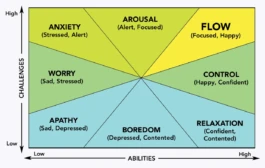
Mihály Csíkszentmihályi's model of flow as related to challenge and ability.
Needless to say, a state of flow isn't perpetual, and perhaps we only feel it with hobbies and other leisureful activities outside of a “productive” context, BUT if it entails focus and happiness, why not consider it in the professional context as well? How can it be fostered for the well-being of each one of us? Studies show that implementing measures such as establishing a goal and feedback feedback-oriented work culture are two ways to go at it.
Read more on this topic on the article Fostering flow experiences at work: a framework and research agenda for developing flow interventions, published by Karen Bartholomeyczik, Michael T. Knierim and Christof Weinhardt.
Sustainable Happiness
"You need to give people goals so they can act" was another gem shared by Sunaina Kohli at the aforementioned Happiness Camp.
At Significa, we have brought plants into the office, fresh fruit aplenty, big luminous windows, AC, standing desks, and heaps of other benefits to empower everyone to do their best work. But what is having a greater impact on our collaboration is not only holding team-wide workshops every now and then, but also drafting Career Paths and Development Plans for each one of us.
This is how it works: each person is part of a Department. In our case, it's Design, Engineering, Product & Project and Business & Operations. Each has a department Lead with whom monthly one-on-ones are to be held. These are not supposed to be an update on tasks’ statuses but an analysis of how the plan is being pursued and what should be done to further activate it.
The Development Plan is owned by the individual. It is not about goals being set by leads, it is about that individual's aspirations to achieve the goals they wish to achieve to accelerate their growth. The individual assesses their plan with their Lead, then once it's all aligned, and the Lead has given their contributions to the plan, it's activated, and momentum is built through regular one-on-ones to assess progress, challenges, successes and any support required to nail those goals.
This way, we are able to have a culture where the individual is focused on something they actually want to work towards, the company has motivated and driven employees, and our culture is nurtured that centres on a growth and continual development mindset, increasing performance, engagement, and ultimately… happiness.
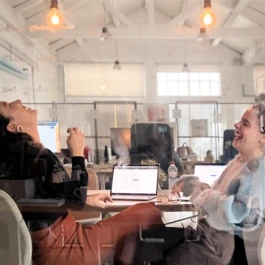
As I discussed the content of this article with some coworkers, we reflected on the paradox of happiness — how it seems both natural and elusive, simple and complex, unique yet grounded in common principles. It should come naturally, but in actuality, if there is no plan put together to achieve it, the likelihood of it being sustainable is that of seeing a falling star in the night sky — it is likely, technically, but sometimes you go hours, days, or years without it.
On the other hand, it seems unfair to reduce happiness to “something” we can foster, learn, and/or practice. Happiness isn’t the same for everyone, and sometimes, it seems like we either simplify it or overcomplicate it.
My practice at Significa involves copywriting in various forms, often about design, product development and best e-commerce practices. Sometimes, I get to write about topics that hit closer to home. I’ve gathered these pieces here so you can get a sense of my own voice and perspective.
Like any great relationship, the best brand collaborations are built on chemistry, mutual benefit, and a shared vision. And, much like in the dating world, some partnerships are unforgettable love stories, while others fizzle out as awkward mismatches.
In this article, I explore the power of brand partnerships: how they boost engagement, drive sales, and even create cultural moments. From IKEA x LEGO to Heinz x Absolut Vodka, we’ll break down what makes a successful collaboration, why some flops should serve as cautionary tales, and how even competitors can come together for the greater good. In short, we’ll show you that good collaborations equal good business.


Why brand collaborations work
According to Forbes, in 2023, some brands generated over 28% of their total revenue through partnerships, with those committed to long-term collaboration seeing annual revenue growth exceeding 50%. These figures highlight the increasing importance of brand collaborations, not just as marketing stunts but as integral components of business strategy.
When done right, partnerships create a synergy that benefits both brands meaningfully. By tapping into each other's audiences, brands expand their reach and attract new customers who might not have engaged with them otherwise. A well-matched collaboration strengthens brand identity, reinforcing credibility and shaping consumer trust through association.
But beyond just visibility, exclusive releases and unexpected crossovers can generate real buzz, driving organic conversations, sparking media attention, and keeping both brands top-of-mind. The excitement surrounding co-branded products often leads to higher demand, premium pricing, and, ultimately, a tangible boost in sales. In short, smart collaborations don't just make noise. They drive impact.
A study by ADM Group found that over 70% of consumers react positively to brand collaborations, with many viewing them as innovative and exciting. The right partnership can turn passive audiences into engaged fans, making collaboration a powerful tool for growth and visibility.
Power Couples
When you know, you know. Some brand collaborations click, creating products and campaigns that leave a lasting impression, capturing hearts and market share alike.
When IKEA and LEGO partnered to create the BYGGLEK collection, they reimagined both storage and play. The boxes double as LEGO-compatible surfaces, seamlessly integrating fun into everyday life. The partnership worked because it addressed a genuine need while staying true to both brands' core values: creativity and functionality.

Swiss performance brand On collaborated with Spanish fashion house Loewe to blend technical innovation with high-end aesthetics. The result? A running shoe that isn't just about function but also about status and design. This type of collaboration appeals to a growing audience that values both performance and style, especially in the high-end athleisure market. Adding even more star power to On's brand positioning, Zendaya, an award-winning actress, singer, and fashion icon, has recently partnered with On, further elevating its appeal to a fashion-forward and performance-driven audience.


Sometimes, the best partnerships are delightfully unexpected.
Heinz and Absolut started a saucy affair to create a limited-edition tomato vodka pasta sauce, playing on the popularity of pasta alla vodka. This collaboration was a masterclass in leveraging both brands' strengths while embracing an element of playfulness and indulgence, with the bonus of creating an entirely new product.


Few rivalries are as fierce as McDonald's and Burger King, yet in 2017, the two fast-food giants set aside their differences for a greater cause. As part of Argentina's "A Day Without Whopper" campaign, Burger King took an unprecedented step, halting sales of its signature Whopper for a day and directing customers to buy a Big Mac instead. The goal? To support McDonald's initiative of donating all Big Mac proceeds to help children with cancer.
The campaign struck a chord, generating 206 million impressions and resulting in 73,437 additional Big Macs sold. The Argentine newspaper Clarin called it "a truce in the eternal war of burgers," proving that even the fiercest competitors can collaborate for meaningful impact.

Broken Hearts
Not every partnership is a success. Sometimes, the chemistry is off, the execution falls flat, or the final product doesn't live up to the hype. Case in point: Nike x Tiffany & Co., a dream collaboration on paper but a bit of a real letdown. Instead of an innovative fusion of sportswear and luxury, consumers got a plain black sneaker with a Tiffany-blue swoosh. The reaction? A collective shrug.
Another high-profile breakup? Yeezy x Adidas. What started as a groundbreaking partnership that reshaped sneaker culture ended in controversy and legal disputes. Adidas terminated its collaboration with Kanye West (Ye) following a series of public controversies, leaving the brand with unsold stock worth billions and forcing it to rethink its approach to celebrity partnerships. What was once an industry-defining collaboration became a cautionary tale on the risks of aligning too closely with individuals who could damage brand reputation.
Authenticity is the foundation of any successful collaboration because a recognisable name alone isn't enough. When two brands don't share complementary values or aesthetics, the result can feel forced and uninspired.
A great partnership should go beyond the expected, creating something that meets and exceeds consumer expectations. With creativity and storytelling at its core, it should surprise and excite rather than leave audiences indifferent. If it feels lazy or uninspired, people will notice, and they won't hesitate to call it out.

Art, meet Brand <3
Art has always been a powerful medium for brands to elevate their image and connect with audiences in new ways. Long before artist collaborations became mainstream, Château Mouton Rothschild, a renowned wine label, set a precedent in 1945 by commissioning renowned artists like Miró, Picasso, and Jeff Koons to design its labels, turning each vintage into a collectable masterpiece.
Today, collaborations between brands and artists go beyond aesthetics; they create exclusivity, cultural significance, and heightened desirability. Louis Vuitton x Yayoi Kusama is a prime example, where the Japanese artist's signature polka dots transformed luxury fashion into wearable art, making the collection both commercially and critically successful. Similarly, Swatch's long-running partnerships with contemporary artists turn everyday watches into artistic statements, blurring the line between product and collectable.


Spreading the Love
Beyond one-off collaborations, some brands have taken partnerships a step further by morphing into marketplaces — i.e., platforms that elevate smaller businesses. Sephora has built a reputation for championing indie beauty brands like The Ordinary and Kiehl’s alongside global giants, giving consumers more choice and diversity in their shopping experience.
A similar model can be seen in Galeries Lafayette, the Paris-based retail giant known for its dynamic collaborations with emerging designers and niche brands. These partnerships often feature large-scale installations that turn the shopping experience into a curated cultural event. A prime example is its work with Jacquemus, where the brand took over its storefronts with immersive pop-ups that blurred the line between retail and art. By integrating independent labels into its ecosystem, Galeries Lafayette masterfully balances heritage with innovation, making it a must-visit destination for fashion-conscious shoppers.
This model is a win-win for both sides. Smaller brands gain visibility, credibility, and access to a broader audience without the heavy lifting of setting up their distribution networks. At the same time, larger platforms keep their offerings fresh, dynamic, and aligned with evolving consumer trends without developing everything in-house.
In this case, love isn't just about teaming up, but creating an ecosystem where everyone wins. The right collaborations don't just boost sales; they drive sustainable growth, spark fresh opportunities, and keep brands relevant in an ever-changing market.


Good Collaborations = Good Business!
Just like personal relationships, brand partnerships thrive on shared values, authenticity, and a touch of excitement. Whether two industry giants team up for a limited-edition product, competitors join forces for a cause, or marketplaces provide a platform for smaller players, the power of collaboration is undeniable.
But here's the thing — flirting with other brands is fun, but if you want the relationship to last, you need to be ready to step up. A successful partnership isn't just about great chemistry; it's about preparation. If you're an e-commerce brand, for example, a well executed collab might drive a surge of traffic—can your platform handle it? Are your logistics in place? Scaling through collaboration is exciting, but only if you're set up to make the most of it.
Women building the digital world.
Imagine a day at the office without women. Not just without their presence but without their impact. You wouldn't be reading this because the internet wouldn't exist without Hedy Lamarr. Need Wi-Fi? Too bad. Trying to open a program? That's off the table, too — Ada Lovelace and Grace Hopper laid the foundation for computing as we know it. Voice recognition? No Siri, no Alexa, no ChatGPT, no Huddles — none of it without Dr. Janet Emerson Bashen and Dr. Marian Croak. Even a simple Google search wouldn't be possible without search algorithms pioneered by Karen Spärck Jones. And forget about typing up an email — word processing itself was invented by Evelyn Berezin in 1968.

Karen Ida Boalth Spärck Jones was a self-taught programmer, responsible for the concept of inverse document frequency (IDF), a technology that underlies most modern search engines. Her slogan was "Computing is too important to be left to men."
While these pioneers laid the groundwork for today's technology, their legacy continues through contemporary women leaders who are transforming different facets of the digital landscape. These innovators are building on their foundations and redefining what's possible.
Revolutionising products and consumer experiences
In the realm of product innovation, women are solving problems that industries claimed were unsolvable. Katherine Homuth upended the hosiery industry when her brand, Sheertex, developed ultra-durable tights using bulletproof material, proving even legacy industries can be disrupted through material science and direct-to-consumer approaches. Similarly, Tania Boler created an entire market category when she launched Elvie, developing smart health devices that changed the conversation around women's health while building an e-commerce empire. On the platforms that power these experiences, Vanessa Lee, Shopify's VP of Product, has been instrumental in shaping user experiences that empower brands of all sizes to scale seamlessly, enhancing checkout flows and driving personalisation, continuing to be a market leader and pioneer in e-commerce solutions.

Elvie offers a range of products to give women the tools to enable what their bodies have always been capable of, across every phase of womanhood.
Creating platforms that put people first
The relationship between technology and human connection is being redefined by innovators like Ana Kirova, who transformed Feeld from a niche dating concept into a global brand by centring UX, privacy, and ethical tech in an industry dominated by algorithm-driven swiping. Her approach complements the revolution started by Whitney Wolfe Herd, founder of Bumble, whose women-message-first model challenged fundamental assumptions about online dating interfaces and user behaviour. In a different domain but with similar human-centred principles, Chani Nicholas and Sonya Passi have turned astrology into a hyper-personalised digital business with CHANI, building a loyal community through subscriptions, content, and an app-first approach — proof that personalisation creates genuine value that users will pay for.

FEELD invested in a complete rebrand made by Made Thought in late 2023.
Education, design, and social impact
Education and design represent perhaps the most foundational areas for long-term change. Jagriti Agrawal is making computer science and AI education accessible to everyone through Kira Learning, using technology to bridge crucial skills gaps for future generations. In the sustainability space, Tessa Clarke co-founded Olio, a food-sharing app that tackles food waste by connecting neighbours to share rather than discard surplus food. Her innovation demonstrates how technology can address environmental challenges while building community connections, proving that digital solutions can create both social and ecological impact. In the design world, Inês Ayer, a Senior Designer now at Instrument (previously at Pentagram), brings a unique perspective to the field. Her vision of design as a catalyst for societal change echoes in her creation of Aliquoti, addressing neonatal mortality among BIPOC women. This commitment to using design for meaningful change is shared by Jessica Walsh, whose work consistently challenges visual communication norms while advocating for women in design through initiatives like Ladies, Wine & Design.
These women are reshaping technology and design across various domains, yet their work also reveals a critical insight: that true innovation requires questioning established frameworks. The very products they've created often challenge conventional thinking about who technology serves and how it should function. This brings us to a fundamental consideration about inclusive innovation: examining the frameworks that shape not just our technology but our understanding of gender itself.
Rethinking gender
In the book Gender Trouble (1990), Judith Butler challenged outdated structures, embracing a broader, more inclusive perspective on gender. As a feminist philosopher and gender studies scholar, Butler argues that gender is not just biological but is shaped by culture, norms, and societal expectations.
This understanding is particularly relevant in technology and design, where products and interfaces often inadvertently reinforce binary thinking. Moreover, when discussing gender equality in tech, we must acknowledge that women's experiences aren't uniform. Intersectionality — a term coined by legal scholar Kimberlé Crenshaw — recognises that aspects of identity like race, disability, sexuality, and socioeconomic background create overlapping systems of discrimination or advantage. Creating truly inclusive digital spaces means designing for this diversity of experience, ensuring the technology we build works for everyone, not just those whose experiences mirror our own.
Questioning these assumptions is fundamental in the fight for women's rights and everyone's right to exist freely, beyond limits or labels. Equality, after all, is what feminism is fundamentally about.
Designing a period tracker
This intersectional understanding directly informed our approach at Significa when we designed and built Dia, an app for TFP (The Fertility Partnership). Recognising that not all women menstruate and not everyone who menstruates identifies as a woman, we considered diverse experiences throughout the development process. It wasn't just about creating a period tracker; it was about designing a tool that centres users' real needs, acknowledges the complexities of reproductive health, and provides an experience that's intuitive, supportive, and free from stigma.
It is meant to be used daily; the more data collected, the more accurate Dia’s insights are. As a result, users gain better knowledge about their bodies, cycles, fertility, and calendars, which ultimately empowers them to be more in control. This project exemplifies our approach to creating digital products that serve real human needs with empathy and precision.
Inclusive workplaces
Beyond celebrating women, challenging societal norms, and building user-centric products, there are plenty of actions which can make workplaces more inclusive.
Companies should implement transparent hiring practices that prioritise skills and experience, eliminating bias in recruitment. Establishing mentorship programmes can actively support women's career growth and leadership development while advocating for family-friendly policies, such as flexible schedules, parental leave, and childcare support, to ensure a more inclusive environment.
Regular pay audits help address gender pay gaps and ensure equal pay, while fostering an inclusive workplace culture means calling out bias, promoting diversity at leadership levels, and making gender equality an ongoing conversation.
Moving forward, together
Technology and design fundamentally shape how we interact with the world. Conscious of its power to either reinforce or challenge existing power structures, the digital products we create don't just solve problems; they reflect our values.
We believe building a more equitable world isn't just about the technology we create; it's about who gets the opportunity to create it. Meaningful change happens through the hiring decisions organisations make, the voices they amplify, and the biases they actively challenge.
Projects like Dia demonstrate what's possible when inclusivity guides product development. This approach creates solutions that serve broader audiences with more meaningful impact.
As a certified B Corporation, Significa is particularly mindful of how our practices affect our team members. The B Impact Assessment evaluates "Workers" as a critical component, examining how organisations support employees of all backgrounds and identities.
Moreover, true progress requires working not only for communities but also within communities, asking difficult questions rather than assuming we have all the answers. As we continue on this journey, we're committed to creating digital experiences that contribute to a more equitable digital landscape.
Women's Day may be one day on the calendar, but the pursuit of equality belongs in our work every day, as designers, developers, and humans sharing this digital world.
Blue Monday — dubbed the “saddest day of the year” — offers a great opportunity to explore how our emotions impact our choices, especially when it comes to shopping. From impulsive purchases to carefully planned buys, it's obvious our feelings often play a starring role in our decision-making… turning Blue Monday into a surprisingly profitable day for online retailers.
You may be wondering, "Is the third Monday of January that bad? "Well, for starters, it’s a Monday. Enough said. Add to that the fading glow of the holiday season, those New Year’s resolutions already hanging by a thread, and the collective financial hangover from December's festivities. Oh, and let’s not forget the gloomy weather — nature's saying, “Stay indoors and reflect on your life choices.”
Of course, this is all a mix of pseudoscience and clever marketing. The term ‘Blue Monday’ was coined in 2005 by the travel company Sky Travel to encourage bookings for winter getaways. And, fun fact, it’s also the title of one of the best songs ever by New Order — a track that arguably does a much better job of lifting spirits than any shopping spree.
But how much do emotions really influence our spending? And what can we do to make smarter, more rational decisions? Let’s explore the psychology of shopping, uncovering the factors that drive our purchases and offering tips on navigating the emotional pull of retail therapy.
Emotional spending
Shopping is far from a purely rational activity. In fact, according to Gerald Zaltman, a Harvard Business School professor, 95% of purchasing decisions are subconscious. In other words, emotions, rather than logic, are the primary drivers behind many purchases. So it’s only natural that on days like Blue Monday, feelings of sadness or boredom may nudge us toward retail therapy as a little pick-me-up. A 2023 report linking to data by Wunderkindshows that sales rose by 18% on Blue Monday as shoppers sought a temporary dopamine hit.
Impulse buying, i.e., buying something on a whim, is also triggered by emotional states. Factors like stress, excitement, or even a sense of reward can lead us to add that extra item to our cart. Retailers understand these emotional cues all too well and use tactics such as limited-time offers and scarcity messaging to heighten urgency and amplify impulsive decisions.
Interestingly, emotions like pleasure, fear, and guilt are often at the core of our purchasing decisions. Pleasure drives us to seek good deals or find the perfect gift, while fear kicks in when we feel we might miss out on a limited-time offer. Guilt can arise after impulse purchases or spending beyond our means. Beyond these emotions, social influences — like the desire for status, acceptance, or community — play a significant role. Brands and retailers tap into these motivations to create a sense of urgency, exclusivity, and even envy. For global markets, cultural values and traditions also shape consumer behaviour, making it crucial for businesses to understand regional nuances.
Emotions arise from networks of neurons across the brain, not single regions as once thought. Understanding these complex processes helps advance mental health treatments and deepen our grasp of human emotions.
Brain + Science + Marketing
Neuromarketing, a field that combines neuroscience and marketing, illuminates how deeply our brains influence purchasing decisions. By studying brain responses to stimuli like advertisements, store layouts, or product packaging, neuromarketing reveals how emotions, memory, and attention shape consumer behaviour.
For example, neuroscience research shows that emotional engagement is critical in purchasing decisions. Ads or products that evoke strong feelings, whether joy or nostalgia, are far more likely to drive sales. This is because the brain processes emotional stimuli more intensely, strengthening memory retention and decision-making. Over the past decade, marketers have increasingly applied neuroscience principles to trigger and influence emotions, changing how brands look, feel, and sound to align with consumer desires. Techniques like storytelling in advertising or crafting sensory in-store experiences tap into these emotional triggers.
The Harvard Business Review highlights a compelling insight from neuromarketing: the role of the brain’s "reward system" in shopping. When consumers encounter a good deal or exclusive offer, dopamine — known as the brain’s “reward chemical” — is released. This surge creates a powerful sense of satisfaction, reinforcing the behaviour and encouraging impulsive purchases.
By understanding these principles, businesses can refine their strategies to align with consumers' thoughts and feelings, while consumers can become more mindful of the subtle influences driving their decisions.
Marketing influences our decisions, but neuromarketing and consumer biometrics reveal that our subconscious is more unpredictable and adaptable than we once believed.
The subtle power of colour and design
Much like our brains react emotionally to storytelling, they also respond to colour and design. Colour psychology studies these responses, revealing how shades can subtly shape our behaviour and perception of brands and products alike. Bright shades like red are linked to impulsive buying behaviours, while blue tones encourage more thoughtful decisions.
Retailers complement their use of colour with thoughtful store layouts designed to encourage unplanned purchases. Frequently moving items or placing essentials at the back ensures shoppers are exposed to new products along the way, keeping them engaged and boosting conversions. Camper, the Spanish footwear brand, does this beautifully, without relying solely on its signature scarlet red.
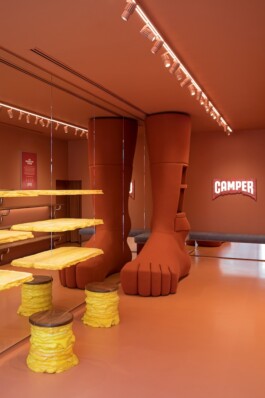

When designing e-commerce platforms, similar tactics are used to guide customers toward additional purchases. Personalised recommendations, strategically displayed “flash sales,” and “frequently bought together” sections mimic the impulse-driving techniques of physical stores. Elements like vibrant call-to-action buttons, attention-grabbing banners, and intentional colour use create a seamless and engaging shopping experience, subtly encouraging unplanned spending while keeping users engaged.
A mindful perspective on shopping
At its core, shopping reveals the intricate connection between human emotions and decision-making. It brings moments of joy and satisfaction but also highlights how much we still have to learn about the workings of our brains. Our susceptibility to stories, colours, and subtle cues underscores the powerful relationship between psychology and behaviour.
For businesses, this understanding is a gateway to creating meaningful, engaging experiences. However, with this power comes the responsibility to act ethically. Harnessing the power of psychology to drive sales must be balanced with transparency and respect for consumer autonomy. Thoughtful design and honest practices don’t just drive sales — they build trust and lasting relationships.
On the other hand, critically examining shopping habits can raise awareness of broader mental health challenges. Whether it’s the dopamine rush of a great deal or the guilt of overspending, recognising these emotional patterns empowers smarter decisions and fosters a healthier relationship with consumption.
Smarter shopping
With all this being said, shopping doesn't have to be an emotional rollercoaster. By understanding the psychological factors at play, taking control of spending and making more mindful decisions is possible! Here are a few practical tips:
— 48-hour rule: taking a step back and waiting two days before making a big item purchase to ensure it aligns with needs and priorities will prevent unnecessary splurges.
— Set boundaries: creating a budget or drafting a list before shopping will keep impulse buys in check.
— Ask why?: inquiring whether a purchase is necessary or posing merely as an attempt to fill an emotional void may be hard but worth it.
— Get sceptical: a top priority should be staying alert to strategies like scarcity messaging or store layout changes designed to nudge toward unplanned purchases.
As we reflect on the psychology of shopping this Blue Monday, let’s remember that understanding our habits goes beyond making better purchasing choices. It’s about harnessing the potential of stories and emotions to create value while prioritising mental well-being. By balancing innovation with integrity, both businesses and consumers can transform shopping into a force for good.
In early 2024, emails were not finding me well at all. I no longer felt like a “turbo-charged whirlwind of ideas” but rather a shadow of myself. Despite my dedication to my job and team, I couldn’t focus. I had trouble sleeping, had recurring nightmares, frequently got sick, and lost interest in almost everything (except for my dog). I often cried, especially in traffic, and intrusive thoughts were my constant companion. I felt rushed but never present, a common symptom of burnout.
The past year had been challenging, and recent events only added to the everyday stress. For about a month, I brushed off my symptoms until I realised I couldn’t continue doing so. I decided to talk to my team leader and find solutions. Now, I'm sharing a brief explanation of what it is, some of its causes, symptoms, and similar phenomena, along with some useful links.
If all of this is hitting a bit too close to home, take this 11-question quiz from The New York Times to assess your emotional well-being right away, or listen to Yale Professor Dr. Laurie Santos and learn "how to be happier in 5 steps with zero weird tricks."
Burnout, qu'est-ce?
Burnout goes beyond mere exhaustion or fatigue from intense activity, which can usually be alleviated with rest or relaxation.
The term "burnout" was coined in the 1970s by psychologist Herbert Freudenberger to describe the impact of stress and high dedication in professions like healthcare and social work. In 2019, the World Health Organization defined it as a syndrome with symptoms such as:
— Energy depletion or exhaustion
— Increased mental distance or negativity towards one's job
— Reduced professional efficacy
Burnout is often job-related, but chronic stress can stem from financial issues, relationship problems, and caregiving burdens. It is exacerbated by the endless stream of perfect lives on social media, along with climate disasters, humanitarian crises, and economic instability.
In fact, burnout isn't a personal failure but a physical reaction to pressure, much like breaking a leg. Would you fix that with a Band-Aid? No. Well, when it comes to burnout, face masks, productivity apps or a few days off won't cut it either. Truth be told, it is distressingly easy to apply an achievement mindset to the concept of rest and self-care itself, laying the blame and responsibility on those with burnout, implying they should do more to feel better. Recovering from any mental illness is not a straight line but rather a process that takes time and effort with plenty of ups and downs.
In his 2015 book The Burnout Society, philosopher Byung-Chul Han argues that stress and exhaustion are chronic social and historical phenomena. Trends like Chinese youth pretending to be birds or dressing “gross” to go to work protest against extreme work hours, hyper-productivity, and the illusory freedom of modern civilisation.

Feeling “Blah"
Remember the hopelessness and the information overload we collectively felt during the COVID-19 pandemic? Most of us were experiencing “Worry Burnout", and we didn't even know it. Similarly, oftentimes, those experiencing burnout only take it seriously when physical symptoms arise. Effectively, one of the good things this pandemic brought about was an increase in awareness and discussion around mental illness, which makes it easier to identify the nuances and specificities of our least positive feelings. For instance, I have discovered there are actually four different kinds of burnout and even a term for when you just can’t find your spark...you just feel “blah” or “meh”.

Four types of burnout
Overload Burnout — Social media can make us believe we not only can but must excel at everything. This burnout occurs when you relentlessly push for success, often sacrificing your health and personal life. You are probably working excessively hard and becoming increasingly frantic in your efforts.
Understimulation Burnout — This burnout stems from boredom and feeling underappreciated at work. A lack of learning opportunities and professional growth can make you feel disconnected, cynical, and avoidant of responsibilities.
Neglect Burnout — This occurs when you feel overwhelmed and helpless, believing you're incompetent or unable to manage your responsibilities. Often linked to imposter syndrome, it involves doubting your abilities and accomplishments.
Habitual Burnout — This arises when physical and mental fatigue becomes chronic, leading to persistent sadness, behavioural changes, and even depression and suicidal thoughts.
Languishing
The neglected middle child of mental health, languishing is a state of mental exhaustion that subtly undermines our self-worth, drive, and sense of purpose. Often mistaken for "the new normal" due to feelings of indifference, it is distinct from depression and its persistent sadness but still incapacitating. Those who languish often feel a lack of control over their lives, uncertain about their future aspirations, are immobilized by decisions, and experience errand paralysis. Without intervention, languishing can disrupt daily life and lead to more severe mental health issues and even increase the risk of premature death.
In Languishing, How to Feel Alive Again in a World That Tears Us Down, Corey Keyes, an American Psychologist, narrates experiencing "restless emptiness" and sheds some advice on how to bounce back from it and get into a state of Flourishing.

If you would rather listen to a podcast than read a book or this article, I found The Happiness Lab to be a great source of knowledge on this topic. Here are my top three episodes so far:
Flourishing
Three months have passed since my diagnosis, and I feel contrastingly better. All toxic positivity aside, and not to sound cheesy, I can see colours again. The whole team at Significa welcomed me back with warm hugs, and my leads presented me with a structured plan to ease me back into work again. I have clear tasks and goals to achieve at my own pace and rhythm, one day at a time.
I won't bore you with the details of my blooming recovery process, but I will share a few things that are working for me and that you definitely shouldn't wait around to be burned out to put into practice.
Are you thriving? To improve your overall well-being, start by reflecting on how you're doing on vaious aspects of your life. Take the NYTimes quizz!
Drugs do work!
The Verve, the most popular British sad boyband of the 90's sang The Drugs Don’t Work, but I disagree. Of course, they were probably talking about other drugs there, but the point I want to make is that it's about time the stigma around psychological problems and mental-health-oriented medicine vanishes.
I'm pretty sure that if it weren't for my psychiatrist, the adjustment of antidepressants he prescribed and the therapy he advised, the bullet points below might have helped, but wouldn't suffice… You wouldn't go through a tooth removal recovery without some painkillers, would you?
The first few weeks I went on leave, I slept a lot. We often underestimate how vital sleep is. Prioritise sleeping! Having Headspace as a perk from Significa helped me heaps, as I was tired but couldn't stop counting sheep.
As I went back to started therapy, I understood it was important to reassess my priorities and goals. Burnout often signals that something in our lives is out of alignment with our values, so taking time to think about what's truly important to me gave me some perspective and allowed me to see a light at the end of the tunnel.
Since I felt incredibly numb, it was important for me to rely on my community and nourish a sense of belonging. This meant walking dogs with friends, having a beer, or simply running errands together. This helped me feel safe and grounded… as did getting back to the basics.
Corny as it sounds, stopping to smell the roses does help one feel more in tune with oneself and reduce anxiety, even if only momentarily. Think of this as dipping your hands into a huge bucket of raw beans — it is merely a sensory experience that reminds you there is more to you than just what is going on in your head. Or travel somewhere, if you can! Even if the destination is only 30 minutes away. Change the scenario! Or do nothing... like watching Jenny Odell talking about doing nothing and the attention economy — or reading about it.
Get in a state of flow! On "Why you should bring love into the office", I explored what this state of deep concentration entails, and I found I was craving it! Each one of us finds it through different tasks: it may be getting a little project running, cleaning up the closet, taking care of plants…. it must be something that builds your confidence, your energy and your emotional strength while you think of nothing much else. For me, this was all of the above, plus building my personal website according to my realigned priorities and goals.
Last but not least… exercise! Yoga, pilates, and meditation helped me a bit, but I still felt I was running low on vibrant energy. I felt too zen after these practices. It turns out the key for me was intensive cardio — I Hate Jim, but I discovered cycling, re-discovered swimming, and made my peace with walking just for the sake of it.
Food for thought: When was the last time you asked your peers and collaborators what they love the most about their job? When was the last time you were asked, or asked yourself?
Even though the title of this article may have misled you, it is not about introducing you to new ways of celebrating Valentine's Day or normalising something as complex as human emotion. The following words merely reflect on the importance of bringing love into the office, in hopes that this "trend" is here to stay (and hopefully wherever you are reading this from, too).

bell hooks, 1996 © Karjean Levine/Getty Images
All About Love
Let's start by considering the definition of love. I believe no one has done this better than bell hooks in her book All About Love: New Visions, where she defines it as an act of will, both an intention and an action.
“Love as 'the will to extend one's self for the purpose of nurturing one's own or another's spiritual growth. […] To truly love, we must learn to mix various ingredients — care, affection, recognition, respect, commitment, and trust, as well as honest and open communication.”
Love is not just romantic mimicry. It is about nurturing each other and our communities. We all move through multiple social spheres, but one of the biggest communities in our lives is that of our work environment and all that it entails. Our professions are a huge part of our everyday lives, massively intertwined with our identities, and, therefore, an essential component of our well-being.
After the COVID-19 pandemic hit us globally, fuelling already existing movements such as quiet quitting and the great resignation, companies were (are) desperate to find solutions to fight against its consequences, so the ingredients that compose loving (as aforementioned) were finally being paid proper attention to.
As a result, an array of articles and books flooded the internet, with corporations of all scales looking at love as a business strategy. Here are some examples of the latter:
Love is Just Damn Good Business
Dare to Lead: Brave Conversations
Positivity: Top-Notch Research Reveals the 3-to-1 Ratio That Will Change Your Life
Love and Work: How to Find What You Love, Love What You Do, and Do It for the Rest of Your Life
Love and Organisation (Humanistic Management)
These may give you the self-help book cringies (if you are one to have them), but truth be told, dealing with our emotions individually and collectively is not exactly something one learns at school. We all instinctively know it is essential to have discussions about how we feel in our private relationships (again, the romanticisation of feelings floods media everywhere) — but often, there is a disregard for the need for it in professional spheres, too. It is as if we forget that we are complex humans 24/7, not just when we are in the privacy of our homes with friends and family.
Therefore, it is urgent to learn how to communicate openly and honestly, especially when it may feel like the likelihood of offending someone with our words is greater than ever (everything has its ups and downs, including adapting to and nurturing different realities than ours).
CEO vs Chief Love Officer
Chief Love Officer sounds a lot like CEO, right? Well, it's on purpose. The premise is that a CEO is in charge of a business, but a CLO does this by bringing love to its forefront, leading by it (rather than by profit, for example). The first person to coin the term was Mia Kyricos, a globally respected thought leader in the wellness and brand strategy business with 25 years of experience. Here's a masterclass that will get your pandemic Zoom call PTSD blasting — but it's worth it, pinky promise.
I first encountered Mia and the concept of CLO when I read Cristina Amaro's book, Chief Love Officer, launched in 2023. The book has now become a YouTube series in which Cristina speaks to different personalities, and together, they explore love as a business strategy. I was pleased to discover that the strategies these two brilliant women propose are similar to those we already implement at Significa.
Moreover, what they identify as the biggest obstacle to implementing love strategies: communication, has been identified by us as our Achilles heel, as we held our company-wide one-week collaboration workshop, aka Eggceptional Week, earlier this year in January, April, and July.
The Happiness Business
Much like any global trend, this whole love, happiness, mambo jambo can become a trap if the hard work it takes to effectively implement changes is not taken seriously enough. In her talk Championing Diversity, Equity and Inclusion: Strategies for Creating an Inclusive Workplace at this year's edition of Happiness Camp in Porto, Sunaina Kohli urged the crowd, "You listen, but you need to be prepared to act!"
HOW? is the burning question.


Pictured above on the left is Bavaroise’s installation: an explosion of happiness to decorate the halls of Alfândega at the Happiness Camp conference. Funny how we seem to associate happiness with fireworks when such is not always the case, don't you think? On the right is a picture of a European classic "tear child" gimmicky painting, spotted at the conference as well, contrasting with the theme… isn't happiness made of tears sometimes, too?
Besides the Chief Love Officer, the Chief Happiness Officer is another title that is spreading quickly. The business of love is flourishing so much that there are even courses to teach Happiness targeted at CEOS, HR Managers, Directors, or whoever wants to positively transform their work culture. Such is the case of Happiness School, which offers an MBA in Organisational Happiness.
This course introduces precisely the need to understand the why, the what, and the how of emotions, offering methodologies and tools for developing an integrated and holistic plan for happiness in organisations.
Never having enrolled in one, I am not comfortable issuing any opinion on the validity of these courses. But to me, one thing is for sure: happiness resides in seeing and being seen, in hearing and being heard, and in not forgetting about our emotional, human nature. Within the professional sphere, this can be applied to knowing where we are and where we are going. It is about fostering being in the Flow.
The Flow
Fostering happiness involves nurturing and safeguarding it, as it's not a perpetual state of being. In 1970, psychologist Mihály Csíkszentmihályi, one of the co-founders of the field of positive psychology, coined the term FLOW, also known as “being in the zone.” It entails a deep sense of enjoyment and satisfaction from performing a particular task. It is when productivity is heightened, as the task at hand is neither too hard nor too easy for the executor. It is when time flies by.

Mihály Csíkszentmihályi's model of flow as related to challenge and ability.
Needless to say, a state of flow isn't perpetual, and perhaps we only feel it with hobbies and other leisureful activities outside of a “productive” context, BUT if it entails focus and happiness, why not consider it in the professional context as well? How can it be fostered for the well-being of each one of us? Studies show that implementing measures such as establishing a goal and feedback feedback-oriented work culture are two ways to go at it.
Read more on this topic on the article Fostering flow experiences at work: a framework and research agenda for developing flow interventions, published by Karen Bartholomeyczik, Michael T. Knierim and Christof Weinhardt.
Sustainable Happiness
"You need to give people goals so they can act" was another gem shared by Sunaina Kohli at the aforementioned Happiness Camp.
At Significa, we have brought plants into the office, fresh fruit aplenty, big luminous windows, AC, standing desks, and heaps of other benefits to empower everyone to do their best work. But what is having a greater impact on our collaboration is not only holding team-wide workshops every now and then, but also drafting Career Paths and Development Plans for each one of us.
This is how it works: each person is part of a Department. In our case, it's Design, Engineering, Product & Project and Business & Operations. Each has a department Lead with whom monthly one-on-ones are to be held. These are not supposed to be an update on tasks’ statuses but an analysis of how the plan is being pursued and what should be done to further activate it.
The Development Plan is owned by the individual. It is not about goals being set by leads, it is about that individual's aspirations to achieve the goals they wish to achieve to accelerate their growth. The individual assesses their plan with their Lead, then once it's all aligned, and the Lead has given their contributions to the plan, it's activated, and momentum is built through regular one-on-ones to assess progress, challenges, successes and any support required to nail those goals.
This way, we are able to have a culture where the individual is focused on something they actually want to work towards, the company has motivated and driven employees, and our culture is nurtured that centres on a growth and continual development mindset, increasing performance, engagement, and ultimately… happiness.

As I discussed the content of this article with some coworkers, we reflected on the paradox of happiness — how it seems both natural and elusive, simple and complex, unique yet grounded in common principles. It should come naturally, but in actuality, if there is no plan put together to achieve it, the likelihood of it being sustainable is that of seeing a falling star in the night sky — it is likely, technically, but sometimes you go hours, days, or years without it.
On the other hand, it seems unfair to reduce happiness to “something” we can foster, learn, and/or practice. Happiness isn’t the same for everyone, and sometimes, it seems like we either simplify it or overcomplicate it.
Creative Manager & Producer
My work spans campaign development, creative strategy, brand storytelling, account & project management, and the production of still-life shoots and short films, created alongside studios such as R2, This is Pacifica, Agency Leroy and Significa.
Curious by nature, I ask the “whys” and “hows” to help brands make space for connection, meaning and new possibilities. I focus on how projects resonate with the people they’re made for and the teams who bring them to life, from first thought to final form.
Ana Fernandes
Creative Manager & Producer
My work spans campaign development, creative strategy, brand storytelling, account management and the production of still-life shoots and short films, created alongside studios such as R2, This is Pacifica, Agency Leroy and Significa.
Curious by nature, I ask the “whys” and “hows” to help brands make space for connection, meaning and new possibilities. I focus on how projects resonate with the people they’re made for and the teams who bring them to life, from first thought to final form.